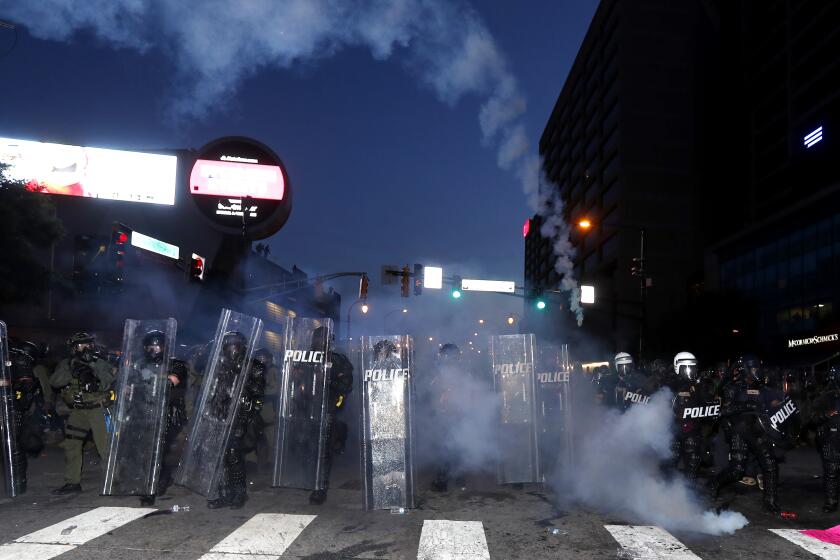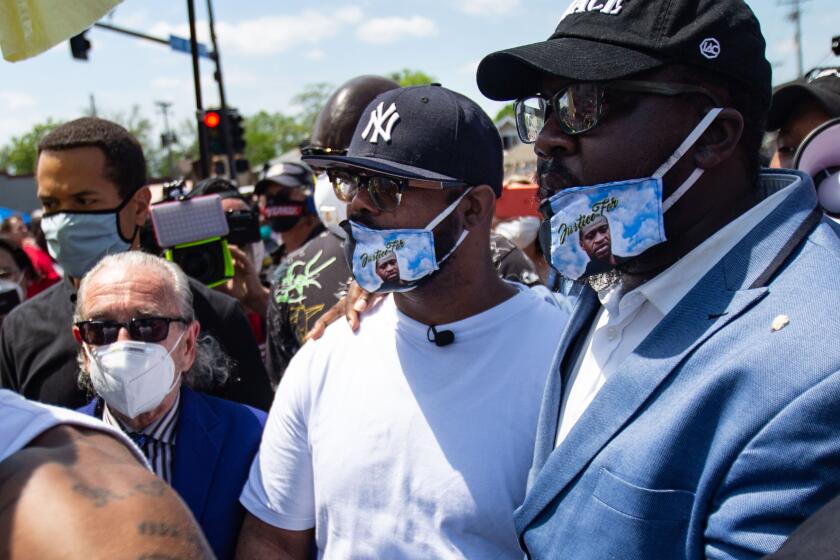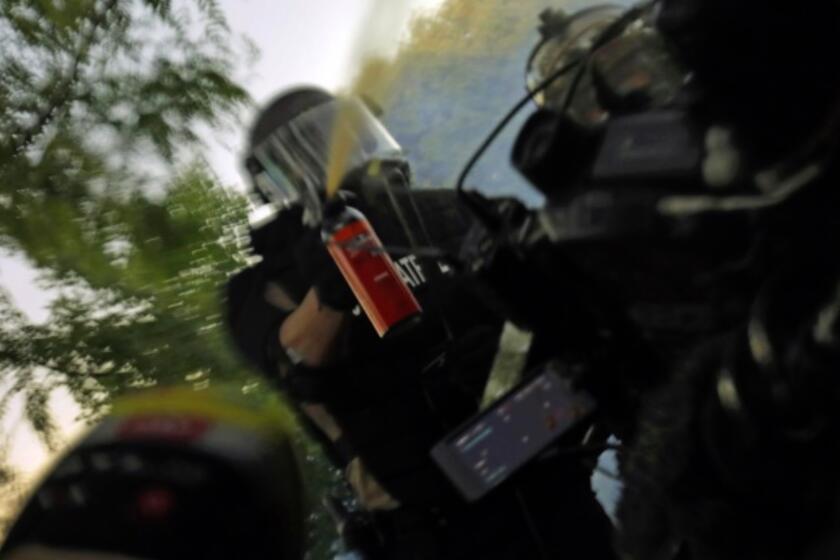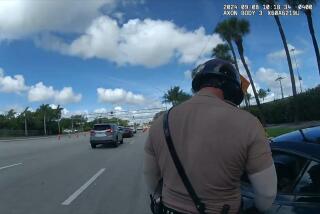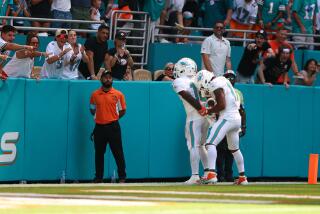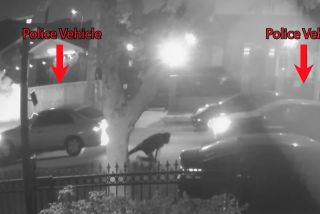Sacramento police investigate officer’s use of neck restraint on teenager

- Share via
The Sacramento Police Department is investigating a use-of-force incident early Monday morning during which an officer placed a teenager in a neck restraint.
A cellphone video, taken by a bystander, shows an officer lying on his back on the sidewalk with his arm firmly around a young man’s neck or chin.
The young man was identified by Sacramento police as Tyzhon Johnson, 18, whom police arrested on suspicion of looting and resisting arrest, police spokesman Officer Karl Chan said. Johnson was booked into the Sacramento County Main Jail, but was scheduled for release Tuesday, jail records show.
“The video captures the end of an incident where officers were attempting to effect an arrest for looting,” Chan said in a statement to the Sacramento Bee. “Prior to this, the suspect had fled on foot and officers engaged in a foot pursuit. The suspect then began to fight with officers. The use of force has been documented and will be reviewed per department policy as with any use of force.”
Zakiyah Guillory, 27, said she was driving home to North Sacramento just before 1 a.m. from a peaceful protest that had taken place earlier in the night. She saw a young man running down the street from police, she said.
The man was carrying two duffel bags, dropped them in the street and then tripped on the sidewalk and fell, she said. After he fell, an officer jumped on him, rolled him over and placed him in what looked like a chokehold, Guillory said.
A look at how police nationwide have responded to protesters.
That prompted Guillory to get out of her car and start recording. A different video shows officers pointing less-lethal weapons, which shoot bean bags, and one officer shoving her away. The push caused Guillory to fall in the street on her side before she got back up and kept recording.
“Stop choking him,” Guillory screamed repeatedly.
“I couldn’t sit there and be silent, especially after peacefully protesting about George Floyd, a man who was killed by being choked,” Guillory said Tuesday. “This is the reason we’re out there and they go and do the same exact thing?”
Guillory questioned why the police used such force on the young man, a black teenager who had dropped the bags. She said she also saw groups of white teenagers who had stolen items that night.
George Floyd’s brother tells the nation to stop rioting: ‘That’s not going to bring my brother back’
George Floyd’s younger brother, Terrence Floyd, traveled from New York City to Minneapolis to visit a memorial at the site where Floyd was fatally restrained by police
The Sacramento Police Department allows officers to use the controversial carotid restraint control hold, as well as other control holds, according to its general orders.
The carotid restraint control hold is performed by applying pressure to the sides of the neck with an arm, which can quickly block blood flow and cause someone to become unconscious.
Plumas County Sheriff’s deputy and use-of-force expert Ed Obayashi said it is unclear from the video whether the officer was using the carotid restraint on Johnson. He said he believes the officer’s response, and the police general orders, are appropriate.
“They’re trusting those officers with discretion and good judgment-making,” Obayashi said. “You don’t want to take vital use-of-force options away completely because that places officers in a dangerous position. Coupled with effective training, I think it’s an effective policy.”
I’ve been covering conflict both nationally and internationally for many years, so I know the dangers involved. But I wasn’t expecting them to attack us directly.
The California Attorney General’s office published a 97-page report in January 2019 containing 49 recommended policy changes for the Sacramento Police Department. Police Chief Daniel Hahn requested that report after the 2018 high-profile police killing of an unarmed black man, Stephon Clark.
One of the recommendations reads: “SPD should continue to prohibit chokeholds, and further prohibit carotid restraints, and other maneuvers which are designed to, or may foreseeably result in, cutting off blood or oxygen to a subject’s head.”
But when the police department general orders were updated in September 2019, it continued to allow neck restraints, including the carotid restraint.
Neck restraints, commonly called chokeholds, have come under increased scrutiny following the death of Floyd, who was killed on Memorial Day by a white Minneapolis police officer who pressed his knee onto his neck for more than eight minutes.
The San Diego Police Department will immediately stop using the carotid restraint, it announced Monday. New York City also reportedly plans to consider a bill that would criminalize the use of the chokehold. That’s the city where the high-profile police killing of Eric Garner by chokehold took place in 2014, sparking the popular protest chant, “I can’t breathe.”
More to Read
Sign up for Essential California
The most important California stories and recommendations in your inbox every morning.
You may occasionally receive promotional content from the Los Angeles Times.
